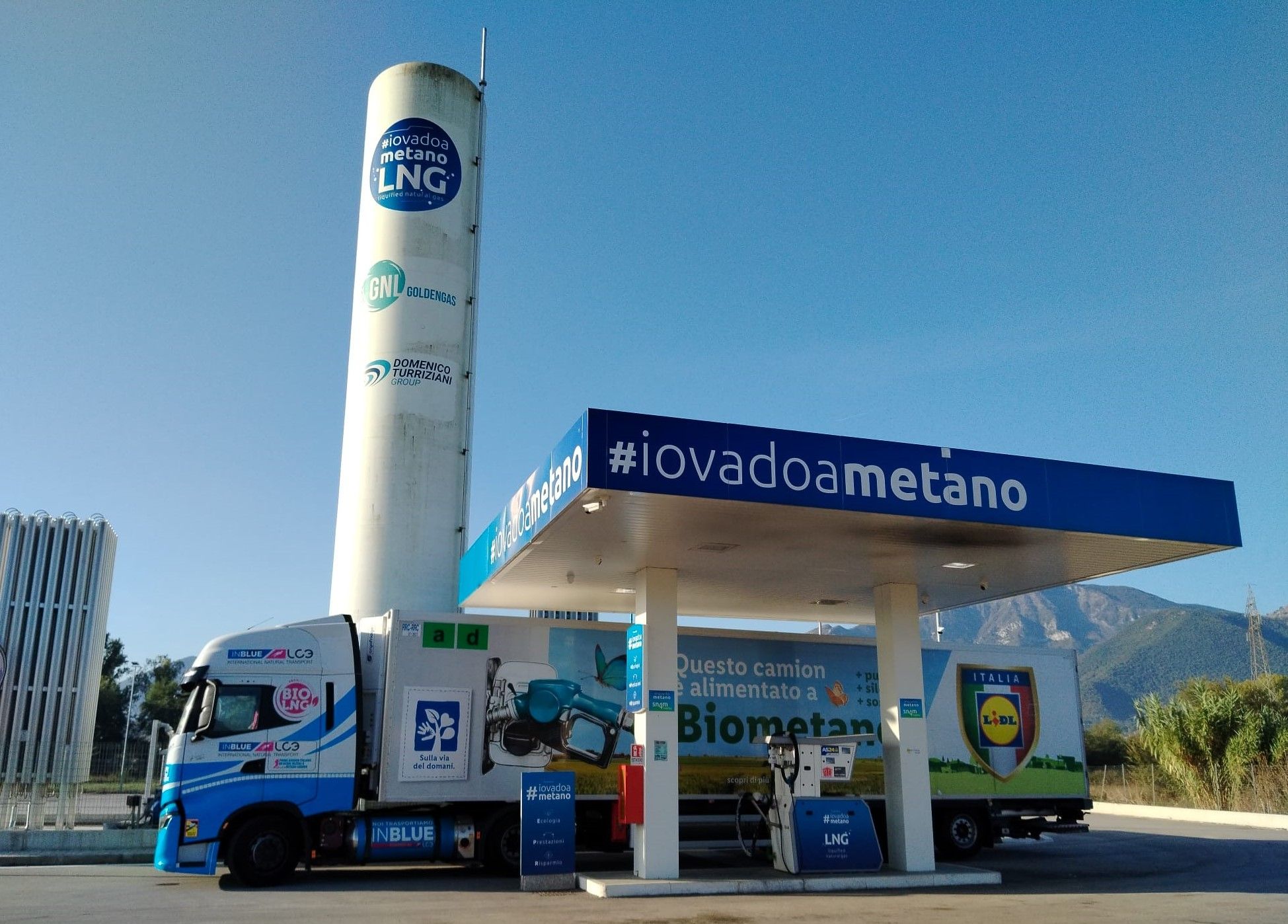Blog
Greenture Charts Course to Net Zero with LNG and BioLNG: Interview

The energy landscape is undergoing a profound transformation, driven by the urgent need to address climate change. In this context, Greenture, a subsidiary of the Italian TSO Snam, is playing a key role in facilitating the transition towards a more sustainable future. This interview with Alessio Torelli, Chairman & Managing Director of Greenture, delves into the company's ambitious plans to leverage LNG and BioLNG as critical transition fuels for decarbonising heavy-duty transport, maritime applications, and off-grid users.
Greenture, a 100% Snam Subsidiary previously known as Snam4Mobility, was mainly focused on the development of the Italian C-LNG Filling Stations network. How has the company strategy evolved in the last few years?
The purpose of Snam, the Italian TSO, is to enable the energy transition by developing and making natural gas infrastructure future proof. Likewise, Greenture’s purpose is to enable the energy transition by developing merchant infrastructures for new decarbonised molecules: BioMethane and BioLNG, Green Hydrogen and CO2.
Greenture is committed to developing and managing, in the midstream energy arena, national small-scale LNG infrastructure projects (such as liquefaction plants, truck loading and vessel reloading infrastructures, etc.), with the aim of increasing the availability of LNG and Bio LNG in Italy.
Greenture also plans to expand its business in the downstream sector, by developing an LNG filling stations network, exploring investment opportunities in LNG industrial, residential and gas-to-power off-grid storage & regasification units, and in bunkering vessels. The ultimate aim is promoting the decarbonisation of heavy road and maritime transport, non-electrifiable railways and off-grid users, all currently powered by fuels that produce high polluting and / or climate-changing emissions.
Which projects are you working on in the midstream segment?
Greenture has consolidated its commitment starting the realisation of two projects aiming to increase the offer of LNG for final applications:
▪️ the upgrading of Panigaglia regasification terminal, in the province of La Spezia, that will be ready by the end of 2024 and that will allow truck loading for the distribution of +200k tons per year of LNG and BioLNG for road and off-grid applications;
▪️ the construction of a Liquefaction Plant connected to the national gas-grid in Campania region, south of Italy, with a LNG production capacity of 50Ktons per year, that will be operational in the second half of 2025 and will be the first facility able to provide BioLNG in southern Italy.
Greenture will also continue to play a strong role in the downstream LNG segment, could you explain your ambitions in this field?
Today road LNG / Bio LNG demand in Italy is equal to 150-200 Ktpa, but we foresee an increasing demand to 2030 up to 1.000 - 1.300 Ktpa. In terms of infrastructures deployed, today in Italy there are about 150 L-CNG operational refuelling stations and we expect that, due to this increasing demand, this network will increase to 2030 up to 500 stations. Greenture plans to contribute to this growth by realising up to 70 LNG stations, thus reaching 10-15% of market share.
Furthermore, we see the opportunity to directly invest in BioLNG off-grid applications for industrial and residential users, a market today still fueled by more polluting fuels like Fuel Oil or standard Diesel.
What’s your view on LNG and bioLNG's role in the achievement of the Fit for 55 and IMO (specific to maritime sector) emissions reduction targets?
We expect that zero-emission synthetic fuels (such as green hydrogen or green ammonia) will take another 10 to 20 years to reach full commercial maturity. In the meantime, transition fuels like LNG and BioLNG are crucial to enable the achievement of the 2030 objective of 55% reduction of GHG emissions established by the European Fit for 55 package and of at least 20% reduction of GHG emissions established by IMO in the maritime sector.
LNG, from an environmental point of view, reduces CO2 emissions by approximately 20% and polluting emissions almost completely compared to traditional fuels. Furthermore, emissions become dramatically lower compared to traditional fuels if the fuel utilised is BioLNG. Environmental advantages combined with mature technology, competitive prices, widespread infrastructure and high production, make LNG and BioLNG a key transition fuel to enable immediate decarbonisation.
Snam Group is implementing a strategy to reach carbon neutrality across all emissions by 2050. Can you tell us more about your net zero carbon strategy?
With regard to Scope 1 and 2 emissions, the Snam Group’s aim is to achieve carbon neutrality by 2040. Starting with the 8% decline in emissions recorded in 2023 on the new baseline of the regulated business perimeter, which brings the overall reduction since 2018 to 16%, and the 4% decrease in the Group total, Snam has set new medium-term reduction targets of 25% by 2027, 40% by 2030 and 50% by 2032. Snam has added to these targets a new long-term commitment: to achieve net zero across all emissions (including Scope 3) by 2050.
In 2023, Snam registered a decrease of 55% in methane emissions compared with 2015 and set a target reduction of 64% by 2027. These results exceeded the targets recommended by the United Nations Environment Programme (UNEP), which once again conferred its Gold Standard award to Snam in 2023.
This interview provides valuable insights into Greenture's vision for a cleaner future and their contribution to the global energy transition. As the world continues its journey towards sustainability, companies like Greenture will be at the forefront, paving the way for a more sustainable future.
Learn more about Greenture's groundbreaking initiatives and engage with industry leaders at the upcoming LNGCON 2024, taking place in Milan, Italy, on 11-12 March 2024. Don't miss the opportunity to network with Alessio Torelli and other delegates from Greenture, and explore the future of sustainable energy solutions. Learn more